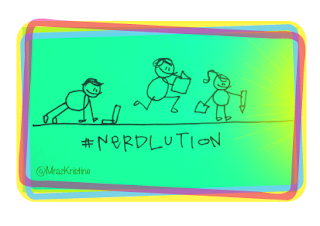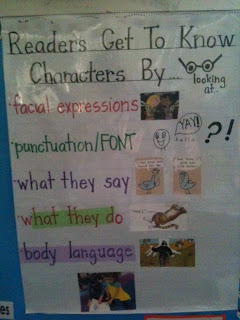My Love Affair With Kevin Henkes Grows: The Year of Billy Miller
I have always had a love affair with Kevin Henkes' children's books. I feel in love with the books with the little mice characters when I was in college and took a children's literature course at the University of Wisconsin in Madison. Sheila Rae stole my heart with her feisty bravery and honest need for support. Lilly's spunk, passion, and love for her teacher made me wish for students like her in my pre-k and second grade classrooms.
Then, one fateful evening, I met Kevin at the Cooperative Children's Book Center's annual Charlotte Zolotow lecture. We all (maybe 100 or so participants that hung around post-lecture) ate vanilla ice cream sundaes together with cherries on top - just like the characters in Weekend With Wendell. I think I had an entire imaginary conversation with Kevin that night, wherein I told him how much I enjoyed his character development in books for such young readers. In real life, I think I shook his hand and said hello.
Fast-forward nearly 15 years and countless books collected. I found myself introducing Kevin at a speaking engagement at the Teachers College Reading and Writing Project's annual Summer Institute. I worked for weeks on crafting just the right words. To prepare, I poured over his books - not just the mouse books - but also his richly woven chapter books. I became a huge fan of Junonia and used part of that book to help craft the introduction. I said this to him (among a few other things):
Your stories are the
stories where characters go to dark places, and move through complex challenges
and within themselves they find the knowledge they need to light their own way.
We watch as Lilly faces the horror of losing her precious
purple, plastic purse. She goes a dark
place and writes Mr. Slinger a letter. But
in the midst of the darkness, she realizes who she really is, a person who
cares more about her relationship with a teacher than she does a purse, and she
finds the courage and grace to ask for forgiveness. That story helps us remember the person we
want to be – helps us light our own way when we find ourselves in the darkness.
Time after time your characters seem to show us how children
and adults can move into challenging moments with grace and humor along side of
a little sorrow and longing. And you
seem to understand that all of that – grace, humor, sorrow, and longing is part
of the way we grow. You show kids that these moments in life are to be expected
and you trust your young readers to understand that they too can solve their
own problems just as the characters do.
Your books mentor our kids into the kind of problem solvers
we need in the world. Now, more than ever, the world needs heroes like you and
books like yours. You are my author-hero.
You are a hero to us all.
Some reviewers have said this book beautifully captures the ordinary moments, and I would agree, but it goes further. It does the kind of subtle teaching that I love to do in k-3 classrooms. Billy Miller's action, external dialogue, and internal thoughts are just the stuff that will give you great small group and whole class conversations after read aloud time. And, it will fuel your character reading units of study.
My book has several dog-eared pages. I'd love to talk with kids and offer kids time to talk with other kids about these parts. Here are a few I can share without giving too much of the plot away:
The conversation Billy has with his dad in and around page 97 and 105.
- Why does Billy make this choice?
- What do you think this says about him as a character?
- How does his dad react?
- What does this say about him as a character?
The conversation and actions between Billy and Sal around page 158.
- What does he decide to do with the pearl? Why?
- What does this tell us about Billy as a character?
- Is this what you thought would happen?
- What might you do?
The quote on page 176. "Billy sighed. He realized that as soon as one problem is solved, something else is right there, waiting to take up your time."
- What do you think the author is trying to say or teach us?
- Does this remind you of anything?
In sum, I would love to hear what you think of the book and what your young readers and thinkers have to say after reading it. Write me back with the ideas that come from your conversations.
And, lastly I need to give two big thank you notes for this post (I would write them and seal them in a dragon envelope like Billy Miller if I had them handy).
#1: A big thank you to the #nerdlution twitter community out there. In case you are new to the hashtag, check out the post that started it all at Colby Sharp's blog and twitter feed. Nerdlution is motivating me to read 60 min of YA a day and I promise to blog about it. Nerdlution lasts for 50 days, but I am hoping my goal sticks as a real, long-term habit.

#2: As part of my Nerdlution goal-setting, I decided that I needed an incentive to do the blogging about my reading. I thought back to when I wrote my first book, and one of the things that kept me going, was the thought of the dedication page. I dedicated that book to my parents and every time I didn't want to write, but knew I had to, I would draft a dedication page, and that got me started. So, I think I will try that again.
I dedicate this blog post to my friend of 25 years, Emily Rhoades, out in Colorado Springs, Colorado. Emily, I can't wait to read your words in your first book. Congrats on making the decision to chronicle your stroke recovery and survival. You are and have always been one of my mentor readers, writers, and teachers. Thank you for your honest advice and empathy. May this year be the year of Emily Rhoades.















